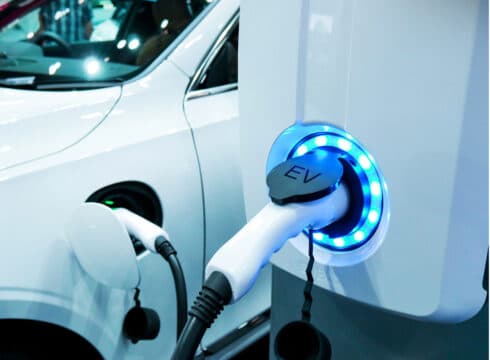By 2030, the EV two wheeler market is expected to reach 22 Mn units, representing 80% of the overall market
Building and nurturing a sustainable transportation ecosystem through EVs require a synergy between the government, fund lenders (particularly venture debt providers) and EV companies
Venture Debt (VD) can bridge the financial gap in the green mobility sector, providing the essential working capital to EV startups
Inc42 Daily Brief
Stay Ahead With Daily News & Analysis on India’s Tech & Startup Economy
In recent years, India has emerged as a trailblazer in the sustainable transportation revolution, focusing strongly on electric vehicles (EVs). The Government’s proactive measures have significantly boosted the EV sector, leading to increased sales and a thriving startup ecosystem.
By 2030, the EV two wheeler market is expected to reach 22 Mn units, representing 80% of the overall market. According to Blume EV Primer 2.0 report, EV three wheeler’s new sales are projected to reach 85% penetration, and EV four wheeler sales are set to surpass 900K units by 2030.
This growth potential has positioned the EV sector as an attractive market for investors seeking impact and substantial returns. This has resulted in significant investment in the EV sector, fuelling further innovation and growth and driving India towards greener transportation.
Identifying The Key To Empowering Mass EV Adoption
The Indian EV space is the third largest in terms of the number of companies (next to the US and China) and fourth highest in funding (after the US, China, and Sweden). EV startups in India have raised a cumulative total of $2.5+ Bn and saw a 117% year on year growth in 2022. However, India’s vast geography demands further innovative solutions to address challenges like charging time and range anxiety to propel mass EV adoption.
In this context, battery swapping has emerged as a promising solution for short-distance vehicles like two-wheelers and three-wheelers. It is particularly beneficial for last-mile delivery companies as they could reduce downtime by instantly swapping batteries. Moreover, innovations like battery swapping make EVs more practical yet eco-friendly in the private vehicle segment.
In the B2B segment, fleet operators can pass the benefits of Government incentives and subsidies down the value chain, thereby making EV adoption more accessible and financially viable for ride-hailing companies and end customers.
Additionally, a few players are developing a connected ecosystem to offer a robust e-mobility infrastructure capability in the B2G, B2C and B2B domains to accelerate mass adoption of EV transportation.
Accelerating Progress Through Government Initiatives
Favourable government support and policies and ample funding are imperative to ensure mass EV adoption and further expand the EV ecosystem.
Supportive policies are essential to establish clear battery-swapping regulations and boost consumer and investor confidence.
Expanding subsidies like the Faster Adoption and Manufacturing of Electric Vehicles (FAME) scheme can make EVs accessible to a broader population. Also, incentives for domestic battery manufacturers, like Product Linked Incentive (PLI) scheme, may reduce import dependency.
Moreover, skill development programs and reduced regulatory burdens for EV-specific financing companies can strengthen the ecosystem.
Government’s FAME Scheme: A Hidden Doorway To Venture Debt
To encourage EV adoption, the Government introduced the FAME scheme in 2015, providing subsidies to manufacturers and infrastructure providers. However, in the second phase of FAME, which has been extended till March 2024, subsidies have been paid with a 100-day lag, creating a working capital challenge for companies.
However, for companies delving into the EV ecosystem and in the growth phase with a requirement for additional capital, Venture Debt (VD) could emerge as one of the prominent solutions, bridging the financial gap during this transitional period and propelling growth in the green mobility sector.
Such amalgamation of innovation, government support, and VD can accelerate India’s green mobility revolution, with notable startups like Battery Smart and Sun Mobility leading the way.
From Top To Bottom: Synergy Between The Stakeholders
Building and nurturing a sustainable transportation ecosystem through EVs require a synergy between the government, fund lenders (particularly venture debt providers) and EV companies.
While the government of India plans to enhance renewable energy production and lay down 10,000+ circuit kilometres of transmission lines to support the EV charging infrastructure, venture debt provides essential working capital to EV startups.
With such financial and infrastructural boosts, EV companies are focusing on innovations fuelling efficient battery manufacturing and smart charging to prevent grid overload during peak periods. This synergy propels the entire EV ecosystem and its growth.
Collaborative Progress To Lead A Sustainable Future
EV companies in India are the powerhouse of innovations, benefiting various stakeholders.
Battery swapping offers quick charging solutions, increasing delivery partners’ income potential and reducing logistics companies’ operating costs.
For the Indian government, promoting sustainable development through EVs leads to fiscal benefits from EV sales.
Additionally, the EV sector offers promising growth opportunities to investors with a green edge, empowering entrepreneurs and contributing to India’s economic growth.
Collective efforts of the government, startups, venture debt providers, and investors create a greener, more sustainable, and prosperous future. India’s embrace of EVs sets a global example, demonstrating the connection between sustainable mobility, economic growth, and societal well-being.
{{#name}}{{name}}{{/name}}{{^name}}-{{/name}}
{{#description}}{{description}}...{{/description}}{{^description}}-{{/description}}
Note: We at Inc42 take our ethics very seriously. More information about it can be found here.


